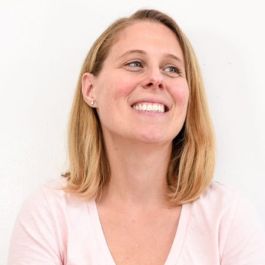As director of product management at BlackLocus, Meredith Webb understands that teams evolve for a reason.
Two years ago, Webb’s team was composed of several siloed units, making it difficult for individuals to collaborate. That’s why the team decided to embrace a more holistic approach while prioritizing shared functionality.
But how to transition away from small teams each focused on solving one stakeholder’s problem wasn’t clear until they looked at the data together, as a larger team. According to Webb, establishing a common set of metrics didn’t merely create a greater sense of organization. It also improved the work the team produces as a whole.
“We became a balanced team producing the best work possible in a specific space,” Webb said. “Consequently, our teams feel more fulfilled working together to tackle significantly larger problems.”
POWERING HOME IMPROVEMENT
Webb said her team’s latest transformation won’t be the last — and that’s a good thing. When the time comes to restructure the organization again, team members will again increase their opportunities to make an impact.
“There is no limit to how our teams find solutions, and we’re excited to continue driving innovation,” Webb said.
Built In Austin caught up with Webb to learn how the company’s evolving product team has guided transformation.

What is the current size and structure of BlackLocus’ product management team, and how has this framework changed over time?
There are eight individuals in our product management org, which has evolved significantly. Two years ago, each team member was tethered to a single stakeholder and their unique pain points. All of our teams, including product, engineering, data science and business intelligence, were siloed. Engineers leaned only on engineering, while the product team solely communicated with stakeholders, all of which hindered collaboration.
However, this structure offered some benefits, such as the fact that each stakeholder had a clear understanding of their team’s work. Yet, as our scope grew faster than our hiring budget, we sought greater opportunities to increase efficiency. One of the things I love most about this org is that it’s never static; there are always new ways for us to grow.
How has your organization’s evolution impacted the work you all produce?
Once we broke down our stakeholders’ specific problems, we realized 90 percent of their issues were duplicative. Our engineers were building preexisting systems in order to dedicate outcomes to each stakeholder, so we decided it was best for our teams to be reconfigured in order to improve speed and efficiency.
We stopped categorizing and planning our work in terms of stakeholders’ needs and instead focused on shared functionality. With a common set of metrics, our product managers, engineering managers and data science managers have discovered a more singular sense of organization.
There is no limit to how our teams find solutions.”
How do you anticipate your team will transform in the future?
The product org will undoubtedly outgrow its current problems and evolve beyond our existing boundaries, and we’ll find new opportunities to restructure our teams. Product managers and engineering and data science professionals are flexible. All we need to do is give them a problem and the room to solve it. One of the things I love most about this org is that it’s never static; there are always new ways for us to grow.







